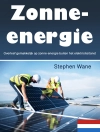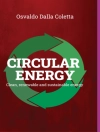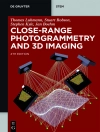This book is built on the recent advancements in understanding thermoplasmonics and highlights the exciting new directions that are shaping this field. Thermoplasmonics using light to heat nanostructures is a promising and rapidly expanding subfield of plasmonics. When the light frequency matches the oscillation frequency of free electrons on the nanostructures, it induces a collective oscillation known as plasmon resonance. This effect allows fantastic control over the optical field at sub-wavelength scales, enhancing the light-matter interaction to surmount the diffraction limits. The plasmon resonance is responsible for fascinating and tunable properties, such as local field enhancement, generation of hot electrons as well as the localized/collective heating. These energetic carriers and heat can be harvested to drive a wide range of physical and chemical processes, making them promising for different fields of science. In this book, we discuss the recent advances in understanding of thermoplasmonics and highlight some of the exciting new directions, covering aspects of its principles, materials, and characterization, along with the diverse applications. The basic fundamentals are first introduced from plasmonic theory and thermodynamics to the thermal-induced processes. Then, much effort is placed on examination of thermoplasmonic materials and the common synthesis methods. The strategies for proper material selection and rational structural design are summarized toward more efficient energy conversion. The synthesizing methods for novel nanostructures are presented with a goal to achieve optimal thermoplasmonic properties. Afterward, the characterization technologies for thermoplasmonics are also addressed, which involves analytic and computational approaches as well as nanoscale thermometry. For each application, the unique role of thermoplasmonics and their associated benefits are elaborated. Research trends and insights into the use of thermoplasmonics to improve performance are analyzed as well. Finally, the current challenges and future perspectives in this field are pointed out in this book.
Tabla de materias
Chapter 1 Introduction.- Chapter 2 Fundamental principles of thermoplasmonics.- Chapter 3 Thermoplasmonic materials.- Chapter 4 Characterization techniques.- Chapter 5 Emerging applications.- Chapter 6 Concluding remarks.
Sobre el autor
Prof. Guohua Liu received Ph.D. in engineering of thermophysics from Chinese Academy of Sciences in 2010. He obtained his 2nd Ph.D. in micro and nano systems technology at University of South-Eastern Norway (USN), 2013. Currently, he is a full professor at North China Electric Power University.
Prof. Liu focuses on the research of thermoplasmonics, heat and mass transfer, multiphase flow and energy systems, leading to some achievements that include: proposing new ideas of digital bubble technology to control boiling heat transfer in microchannels; developing a two-step anodic method to control the fabrication of free-standing crystallized nanotube membranes; and establishing a new concept of thermal boundary layer that has been validated in solar evaporation. He has published more than 100 papers in international journals such as physics reports, chemical society reviews, and nano energy, and three of which are ESI highly cited paper.











